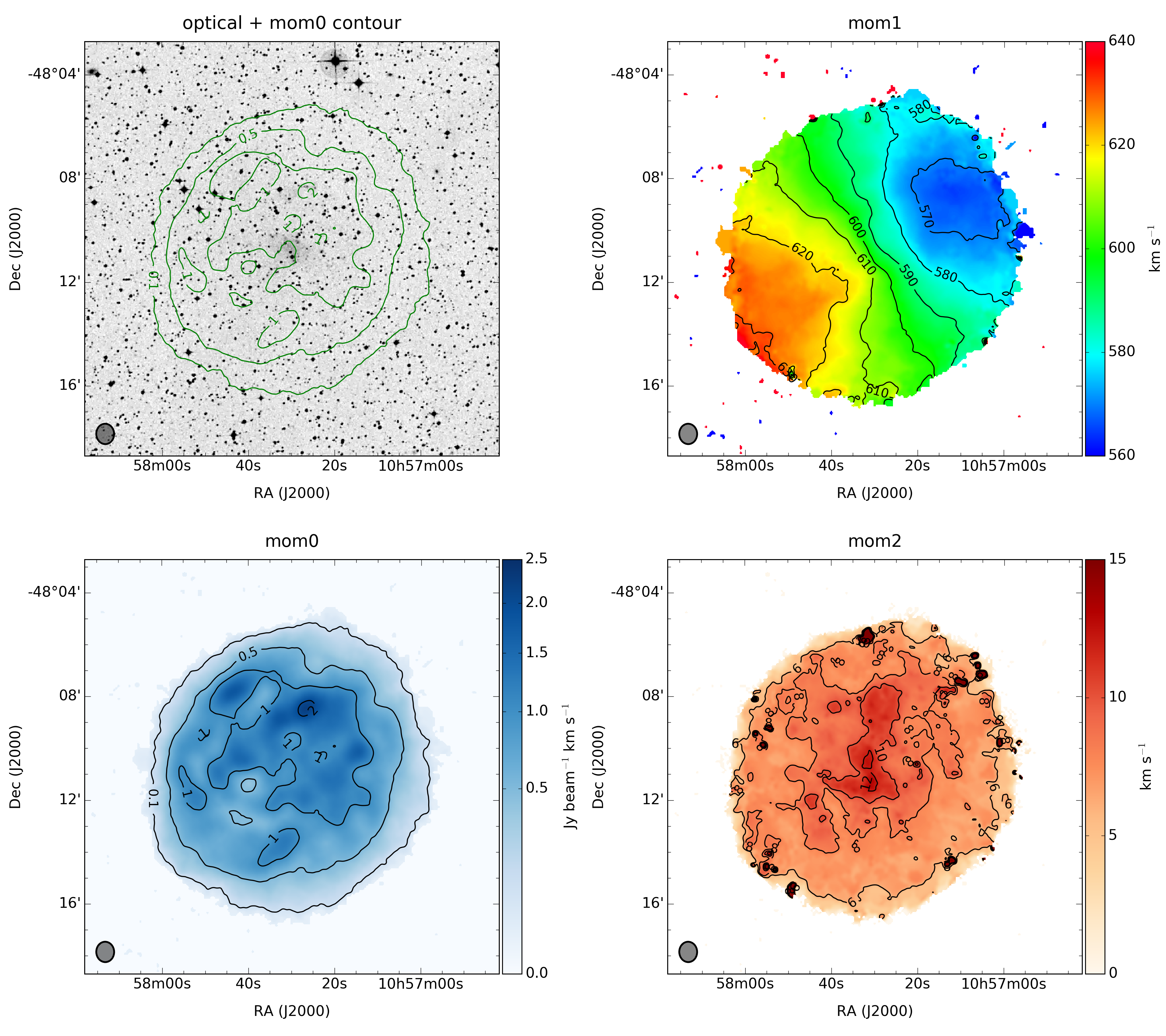ESO 215-G?009

ESO 215-G?009 (HIPASS
J1057-48) is a highly obscured (b = 10.5 degr) dwarf irregular galaxy
at a TRGB distance of 5.25 ± 0.41 Mpc (Karachentsev et al. 2007). It
appears to be rather isolated with a low current star formation rate. Its
nearest known neighbour is likely the small spiral galaxy ESO 318-G013 (HIPASS
J1047-38) nearly 10 degrees away. Warren, Jerjen & Koribalski (2004) determine
an HI mass to light ratio of MHI/LB = 22 ± 4
M☉/L☉, the highest recorded for a galaxy in
the literature.
Our ATCA data show the HI disc of ESO 215-G?009 to extend over six times the
Holmberg radius of the stellar disc. We measure FHI = 110.1 Jy km/s,
in agreement with HIPASS (Koribalski et al. 2004), and derive MHI
= 7.1 × 108 M☉. Warren et al. (2004) note
that its azimuthally averaged surface density remains below the critical gas
surface density at all radii. While its rotation pattern is very regular, the
galaxy's near circular shape (suggesting a near face-on orientation if the gas
rotates in circular orbits) is somewhat in contrast to the measured rotation
amplitude. Using 3D FAT Kamphuis et al. (2015) obtain an HI rotation curve
indicating vrot = 93.0 km/s at Rmax = 9.3 kpc (for i =
18.5 degr and PA = 119.7 degr) and Mdyn = 1.9 × 1010
M☉. See also previous HI kinematics analysis by Warren et al.
(2004) and Kirby et al. (2012).
Reference:
Koribalski et al. 2018
* LVHIS database
* LVHIS homepage
* next